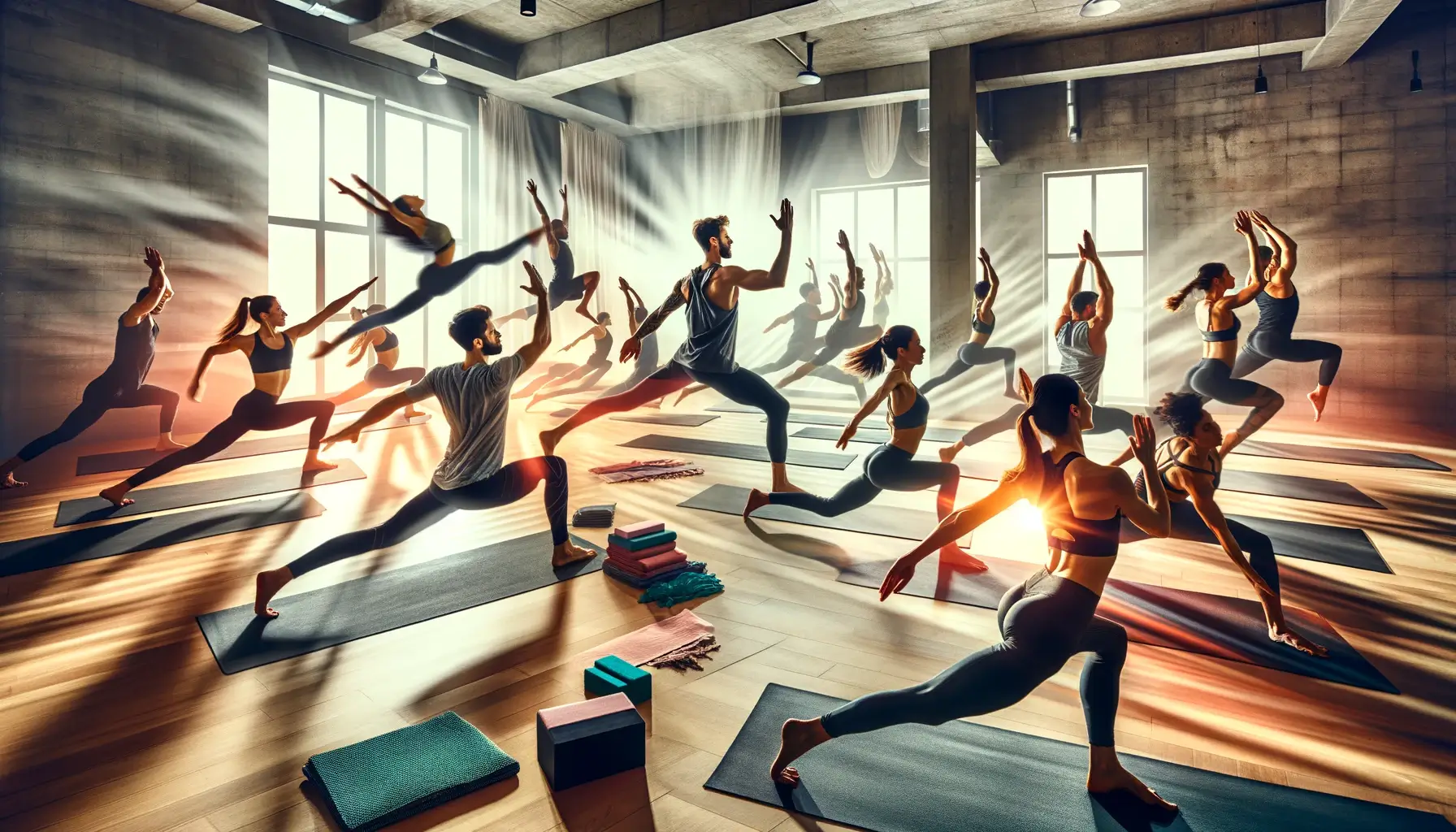Most fitness enthusiasts are familiar with the concept of yoga, but not all are acquainted with the dynamic practice of Power Yoga. This intense and vigorous form of yoga focuses on increasing both physical strength and endurance through a series of challenging poses and sequences. Power Yoga is known for its fast-paced nature and emphasis on muscle engagement, making it an ideal workout for individuals looking to build strength and stamina. By exploring the dynamics of Power Yoga, practitioners can achieve notable improvements in their overall fitness levels and unlock the potential to push their boundaries further.
Key Takeaways:
- Power Yoga Promotes Strength: Power yoga helps in increasing muscle strength by focusing on bodyweight exercises and poses that challenge various muscle groups.
- Improves Endurance: By incorporating flowing sequences and continuous movement, power yoga can build stamina and improve endurance levels over time.
- Enhances Flexibility: Regular practice of power yoga can lead to increased flexibility as it involves stretching and lengthening of muscles through various poses.
- Mental Focus and Clarity: The dynamic nature of power yoga, combined with controlled breathing techniques, can help in enhancing mental focus, clarity, and concentration.
- Boosts Overall Well-being: Power yoga is not just a physical workout but also a meditative practice that can help reduce stress, improve balance, and promote a sense of well-being.
The Anatomical and Physiological Underpinnings of Power Yoga
The Muscle Mechanics in Asana Performance
If we probe into the intricacies of power yoga, a key aspect that emerges is the emphasis on muscle mechanics in asana performance. Power yoga focuses on engaging specific muscle groups to build strength and endurance. The dynamic movements and postures require activation of various muscles simultaneously, leading to enhanced muscle coordination and control. This targeted approach not only aids in improving overall muscle tone but also contributes to better functional movement patterns in daily activities.
Cardiovascular Fortification through Vinyasa
Vinyasa, the seamless flow of movements synchronized with breath, plays a pivotal role in cardiovascular fortification during a power yoga practice. The repetitive, rapid sequences of poses elevate the heart rate and promote efficient blood circulation throughout the body. This cardiovascular challenge not only enhances cardiovascular endurance but also stimulates the lymphatic system, aiding in detoxification processes and overall vitality. Regular practice of power yoga can result in improved cardiovascular health and increased stamina.
Cardiovascular fortification through Vinyasa is important for maintaining a healthy heart and enhancing overall physical endurance. The continuous flow of movements in power yoga serves as a cardiovascular workout, providing a holistic approach to fitness and well-being.
The Conceptual Framework of Power Yoga

The Principles of Thermodynamics in Power Yoga
FrameworkSome of the fundamental principles of thermodynamics can be applied to the practice of power yoga. In power yoga, the concept of energy flow and transformation is key. Just as energy cannot be created or destroyed in the universe, but only transformed, power yoga focuses on channeling and harnessing the body’s energy to build strength and stamina.
The Evolutionary Perspective on Physical Vigor and Yoga Practice
YogaTaking an evolutionary perspective on physical vigor and yoga practice, we can see how the human body has evolved to be an incredible machine capable of immense strength and endurance. Through the practice of power yoga, individuals tap into these inherent abilities, pushing their bodies to new limits and achieving levels of fitness they never thought possible.
Vigor Power yoga combines the ancient wisdom of yoga with modern fitness techniques to create a practice that not only strengthens the body but also challenges the mind. By pushing through physical discomfort and mental barriers, practitioners of power yoga can achieve a level of strength and stamina they never thought possible. This fusion of ancient tradition and modern innovation is what makes power yoga such a dynamic and effective form of exercise.
Practical Applications and Strategies
Structuring a Power Yoga Routine for Optimal Results
Yoga, when practiced with a focus on power and intensity, can be a potent tool for enhancing strength and stamina. To structure a power yoga routine for optimal results, it is imperative to incorporate a combination of dynamic poses, flowing sequences, and challenging balances. Begin with a gentle warm-up to prepare the body for the more strenuous postures, then gradually increase the intensity throughout the session. Remember to include a cool-down period at the end to promote relaxation and prevent injury.
Progressive Overload and Adaptation in the Power Yoga Context
Any successful power yoga practice relies on the principles of progressive overload and adaptation. By gradually increasing the intensity, duration, or complexity of your yoga sessions, you can challenge your body to continually improve and grow stronger. This process of adaptation ensures that your muscles are constantly pushed beyond their limits, leading to increased strength, endurance, and flexibility over time.
Structuring a power yoga routine with a mindful focus on progressive overload can help you achieve positive results while minimizing the risk of injury. By carefully monitoring your progress and making small, incremental adjustments to your practice, you can ensure that you are always moving towards your fitness goals in a safe and effective manner.
Beyond the Mat: Psychosocial Effects of Power Yoga

Cognitive Enhancements and Mindfulness
Now, let’s investigate into the cognitive enhancements and mindfulness that can be achieved through the practice of Power Yoga. For many practitioners, engaging in the flowing sequences of poses and synchronized breathing not only strengthens the body but also sharpens the mind. The focus required to move through challenging postures enhances concentration and cultivates mindfulness, leading to improved cognitive function and mental clarity.
The Social Dynamics of Group Fitness Yoga Sessions
Power Yoga is not merely a solitary practice; it also encompasses the social dynamics of group fitness yoga sessions. Power Yoga classes often create a sense of community and camaraderie among participants, who encourage and support each other through the physical and mental challenges of the practice. This shared experience can foster a sense of belonging and connection, making the yoga studio a space for not just individual growth but also collective empowerment.
Power Yoga classes often create a sense of community and camaraderie among participants.
To wrap up
With this in mind, we can conclude that power yoga offers a potent combination of physical strength and mental resilience. By focusing on dynamic movements and breath control, practitioners can boost their physical endurance, flexibility, and overall health. The disciplined practice of power yoga not only enhances physical strength and stamina but also sharpens mental focus and promotes inner peace. Through consistent practice, individuals can cultivate a strong mind-body connection that will serve them well in facing life’s challenges with grace and determination.
FAQ
Q: What is Power Yoga?
A: Power Yoga is a dynamic and intense form of yoga that focuses on building strength, flexibility, and stamina through a series of challenging postures and sequences.
Q: How does Power Yoga differ from traditional yoga?
A: Power Yoga differs from traditional yoga in its emphasis on strength and stamina building. While traditional yoga focuses more on relaxation and flexibility, Power Yoga is more physically demanding and fast-paced.
Q: What are the benefits of practicing Power Yoga?
A: Practicing Power Yoga can help boost strength, improve flexibility, increase stamina, enhance focus and concentration, and promote overall physical and mental well-being.
Q: Is Power Yoga suitable for beginners?
A: While Power Yoga is a more challenging form of yoga, beginners can still practice it by starting with modified poses and gradually building strength and flexibility over time. It is important to listen to your body and not push yourself beyond your limits.
Q: How often should one practice Power Yoga to see results?
A: To see significant results in strength, flexibility, and stamina, it is recommended to practice Power Yoga at least 3-4 times a week. Consistency and dedication to the practice are key to experiencing the full benefits of Power Yoga.

